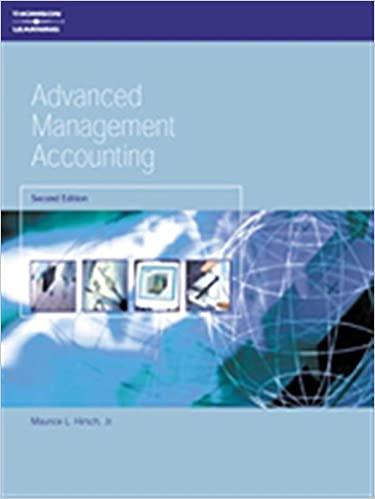Answered step by step
Verified Expert Solution
Question
1 Approved Answer
Throughout my study guide Ive ran across problems that I feel I do not know the answer. I would really appreciate the help , some
Throughout my study guide Ive ran across problems that I feel I do not know the answer. I would really appreciate the help , some of these questions I do have an answer in mind and I just want to make sure I am right. Thank you. 




61 Your company previously averaged about 20% of its total accounts receivable in the "over 90 due" category and now has 35% in th All else equal, using the aging of accounts receiva method, the amount of the bad debt adjustment will A. creasing the ending balance of the allowance account B. rise, increasing the ending balance of the allowance account. C. fall, decreasing the ending balance of the allowance account. D rise, decreasing the ending balance of the allowance account. 62 On ge, 5% of total accounts receivable has been uncollectible in the past. At the end of the year, avera balance of accounts receivable is $100,000 and the allowance for doubtful accounts has a credit balance of uring the year were $150,000. Using the aging of accounts receivable method, the estimated bad debt expense would be: A. $4,500. B. $5,000. C. $5,500. D. indeterminable; the aging of accounts receivable method cannot be used, because, based on this information, the percentage of credit sales method should be used. 63. Before adjustment, the allowance for doubtful accounts has a credit balance of $2,700. The company had $140,000 of net credit sales during the period and historically fails to collect 4% ofcredit sales. The company uses the percentage of credit sales method of estimating doubtful accounts. After adjusting for estimated bad debts, the new balance in the allowance for doubtful accounts account will be: A. $8,300. B. $5,400. C.$2,900 D. indeterminable; it cannot be determined from the information given. 64. Your company has averaged about 26% of its accounts receivable in the "over 90 days past due category and now forecasts 8% in this category. You use the aging of accounts receivable method of estimating bad debt expense. If the total of credit sales remains unchanged from previous months and no write offs are made, the estimate of bad expense based on the new forecast will: A. increase over the estimate for previous months. B. decrease over the estimate for previous months. C. not change. D. will depend on the percentage of credit sales deemed uncollectible. 65. When a company makes an adjustment in anticipation of future uncollectible debt: A. it debits an asset account and credits a liability account. B. it debits a revenue account and credits an asset account. C. it debits a revenue account and credits an expense account D. it debits an expense account and credits a contra-asset account. 66. Your company uses the percentage of credit sales method for calculating bad debt expense. If your company has S2 16,000 in total sales, of which S 178,000 are on credit, and its historical bad debt loss is S% of credit sales, bad debt expense: A. is $12,960. B. is $10,680 C. is $38,000. D. cannot be determined from the information given 




Step by Step Solution
There are 3 Steps involved in it
Step: 1

Get Instant Access to Expert-Tailored Solutions
See step-by-step solutions with expert insights and AI powered tools for academic success
Step: 2

Step: 3

Ace Your Homework with AI
Get the answers you need in no time with our AI-driven, step-by-step assistance
Get Started


